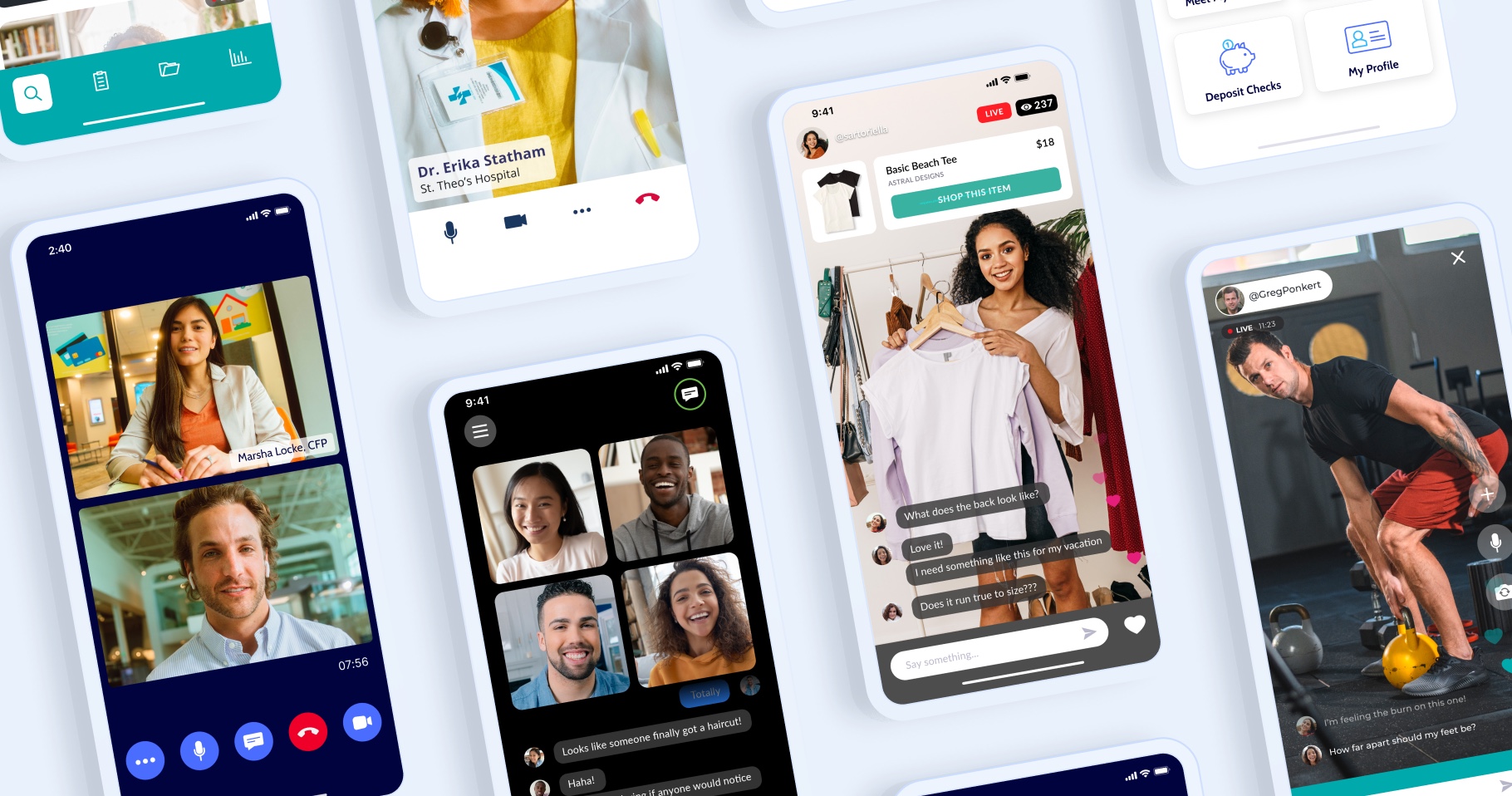
Add collaborative browsing to your web page with Zoom Cobrowse SDK
Zoom's Cobrowse SDK provides developers with all the tools required to easily integrate the cobrowsing experience into their web applications.
Updated on March 24, 2023
Published on March 22, 2021


Video creates endless possibilities for engagement and collaboration — and when it’s built seamlessly into an app or website, it makes the experience that much better. From virtual coaching to fitness classes to real estate management, companies are using the Zoom Video SDK (software development kit) to bring our HD video, audio, and interactive features into their video-based applications and desktop experiences.
For developers looking to serve new audiences and create additional opportunities for revenue, our Video SDK provides the tools you need to build for web, iOS, Android, Windows, macOS, Linux, React Native, and Flutter, while still using your own branding and building your own user interface. That means you get to leverage Zoom’s reliable and scalable platform while providing your customers with a seamless live video experience across major platforms.
Since we first launched the Zoom Video SDK in 2020, we’ve introduced a ton of new features to help you customize your app or platform. Get to know all that our Video SDK has to offer below.
A Zoom SDK, or software development kit, is pre-packaged code that developers can use to build quickly on the Zoom platform, eliminating the need to start from scratch. The Zoom Video SDK allows you to build with Zoom’s core video and audio technology in your own application by providing you with audio, video, live streaming, screen sharing, chat, data streams, and more as a service. You can also access reporting, analytics, session controls, QoS, QSS, and more, using REST APIs and webhooks.
We also have a Meeting SDK, which you can use to embed Zoom Meetings and Webinars right into your website, mobile, or desktop apps, and a Zoom Apps SDK to help you create apps that run in the Zoom platform.
Zoom’s Video SDK sessions support HD video, can be recorded to the cloud, and support rendering of multiple videos (up to 49 videos at a time on native platforms, 25 videos on desktop Chrome, Edge, Safari, and Firefox, and 4 videos on mobile browsers). The Video SDK for web can even be embedded in iOS and Android WebViews for a hybrid implementation that doesn’t increase your native app size.
This gives you a wide range of options and opportunities to customize your experience. Here are just a few ways companies are building with our Video SDK:
Social: Integrate Zoom’s functionality into social media applications to help create reliable and engaging communications experiences, such as on-the-go live streaming with interactive chat.

Gaming: Using Zoom’s HD video and audio and interactive features, you can build desktop gaming apps that offer new opportunities for audience engagement.

Retail: Organizations can leverage Zoom’s interactive features to create unique shopping experiences, like influencer lead shopping, that are tailored to customers and help drive revenue.
If you’re building an app or web experience, having high-quality video is table stakes. Creating a unique experience is what matters in this crowded market.
Take a look at how you can create an even more engaging experience with some of your favorite Zoom features:
Set a virtual background of your choice or use the blur option. Perfect for branding your video experience or enabling your customers to keep their backgrounds private.
Subsessions are Video SDK’s version of Zoom breakout rooms. You can use them for building waiting rooms, or breaking out a large number of participants into smaller groups, all in the same session.
Live chat is a great way to keep participants engaged or communicate information. Build instant messaging to chat with all participants in a session or a specific participant.
The Zoom Video SDK has a built-in websocket connection feature called a command channel so you can pass data to users in a session in real time. This can be used to build a whiteboard, poll participants, set up a Q&A, trigger real-time reactions to live content, and even to state updates to a shared model such as a board game.
Broadcast your Zoom Video SDK sessions to an unlimited view-only audience via RTMP. This allows you to livestream your sessions to YouTube, Facebook Live, Twitch, or other streaming platforms, and even build broadcasting apps.
Make your video content more accessible with the help of live transcription and translation. You can receive speech as JSON objects, in real time, powering use cases like closed captioning, sentiment analysis, and language translation.
For example, Lingmo, a cloud-based AI translation software provider, leveraged the Zoom Video SDK to build Lingmo Captions, which provides instant translated captions for meetings. This application not only enables communication between people who speak different languages, but can also enhance the user experience by providing additional opportunities for engagement.
“Zoom’s Video SDK was a good fit for us because it worked seamlessly with our technology and enabled us to assist enterprise customers in a new way. It allowed us to accelerate the development of our solution, and gave us the flexibility to enhance our product offering for our customers.”
Danny May, CEO and co-founder, Lingmo International
Security is top of mind for everything we do here, and that extends to our developer platform, too. Our Zoom SDK tools have built-in security features to help you create secure video experiences.
Our Video SDK offers data center routing preferences, so you can choose which countries’ data centers you want your traffic to route through — at an account level, or to get even more granular, at a per-user-per-session level. You can also choose which countries your communications content, like cloud recordings, are stored in.
And if you’re building healthcare applications, keeping patient information secure is always a priority. Our Video SDK helps enable providers to meet their HIPAA compliance obligations (a BAA on file is required).
We have made great progress in improving the developer experience when building with any Zoom SDK. Zoom Video SDKs are available to install from NPM, Swift Package Manager, Cocoa Pods, and Maven. We have also improved our documentation to help make it easier for developers to follow and build with the Video SDK successfully.
Our Video SDK offers 3 pre-built roles: host, co-host, and user. It also supports a user_identity property that allows developers to build custom roles or pass in custom identifiers for their users.
To help deliver a quality experience, developers can get real-time insights into session quality and even report issues to Zoom programmatically.
Now it’s easier than ever to start developing applications with Zoom’s Video SDK. There’s no charge to get started with up to 10,000 session minutes per month — and we’ve got flexible options after that, like our Universal Credit Plan or pay-as-you-go plan.
Start building with the Zoom Video SDK today!
Editor’s note: This blog was originally published in March 2021 and has been updated in October 2023 for accuracy and comprehensiveness.